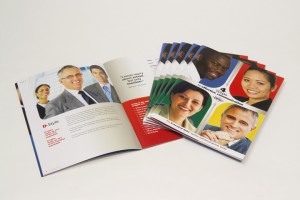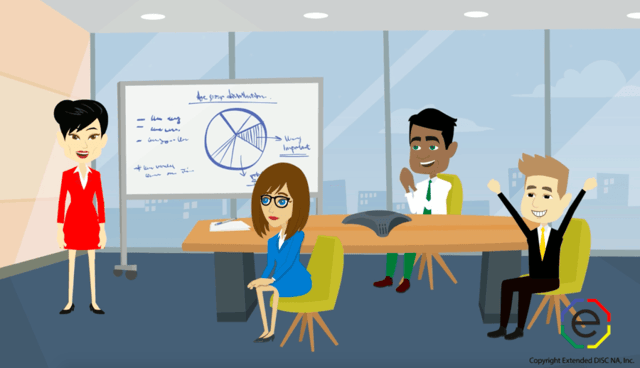Your participants take the DISC profile assessment, complete a successful DISC training, and are now motivated to use their DISC knowledge. However, "the real world" can derail that from happening.
What do you do now that you've delivered a successful DISC training on communication, leadership, customer service, or team building, etc.? Your clients are going back to their workplaces, and of course, get slammed with project deadlines, meetings, emails, and phone calls. How do we help them succeed in using DISC and becoming more successful?
 The key to a successful DISC training is not the training itself, but what your clients do with their DISC knowledge afterwards. Success comes with actual usage of the DISC tool. What we don't want to happen is for the DISC report to be filed away in a desk drawer. Following up is best, for both you and your clients, when you can follow a simple process.
The key to a successful DISC training is not the training itself, but what your clients do with their DISC knowledge afterwards. Success comes with actual usage of the DISC tool. What we don't want to happen is for the DISC report to be filed away in a desk drawer. Following up is best, for both you and your clients, when you can follow a simple process.
What comes after a successful DISC training?
As DISC trainers, one of the biggest challenges beyond delivering the DISC workshop, is to create a follow-up plan that ensures successful use of the DISC tool. There are multiple options DISC trainers can use. Find what works for you. However, there are factors that can strongly support your clients' successes.
The most important thing is for the message to be clear from the top of the organization. People need to hear from top leadership, “this is why DISC is important, this is how we will help you to learn it, and this is what we will expect from you”. Leaders needs to use DISC language daily so their employees recognize the value DISC has in their organization. Making DISC part of an organization’s culture requires regular reinforcement.
In addition, all levels of managers, from top down, must ask this question often, “What DISC-style is the prospect, client, co-worker, etc.?” All of the employees need to know DISC is important and they are expected to use it. The question should be asked in one-on-one interactions AND in group meetings. This virtually guarantees DISC will become part of the culture.
Using DISC training materials as reinforcement tools
A great way to transition from DISC workshop to real world is to provide reinforcement tools that create practice. You could give takeaway exercises that reinforce DISC. For example, ask people to practice identifying DISC profiles by the questions DISC types ask. Another mental exercise could be to identify a person's least comfortable style and then think of what types of adjustments can be made to improve interactions.
There are visual reminders and tools to use as a follow-up a successful DISC training. DISC training materials are available or you can even create your own. Extended DISC provides different DISC training materials to support the Extended DISC Assessment and promote further use of DISC. Some of the DISC training materials include the Self-Development Guide, DISC Quick Reference Cards, and DISC Quick Overview Cards.

The Extended DISC Self-Development Guide, not only reviews DISC styles, but further explains the DISC report. In addition, it's a workbook. You can direct participants to the "My Communication Strategy" worksheet to practice identifying DISC styles of others and strategies to adjust styles to improve how you interact with others.
Whichever DISC training support material you use, make sure it's simple and handy so people can revisit it often.
Reinforcement reports go beyond DISC profile results
The DISC report is one way to better understand our DISC style. In addition, a person's DISC profile result can also be viewed in supporting DISC reports. These reinforcement DISC reports focus on specific areas of communication including motivation, overuse of strengths, and how our DISC style handles pressure.
The follow-up reports don't require people to take an additional DISC test. They are brief, simple to use, and include exercises to further one's DISC knowledge. Since they are topic-specific, you can highlight different reports to send out. What if you don't want to send out more reports? Remind clients the DISC report is dynamic and can be revisited. You can follow-up by simply highlighting a section of their DISC report. Try directing clients to revisit the sections on their "decision-making" style or "how they tend to show up under pressure". The key here is to build on what they learned, maintain self-awareness, and practice DISC knowledge.
Using DISC training videos as follow-up tool
 You can use the DISC training videos before, during, or after a DISC workshop. However you use them, the short, animated DISC videos make a quick introduction or follow-up; as well as a reinforcement tool “to any DISC workshop”. Each of the 2 - 3 minute videos cover one of the 4 DISC types. For example, send an email to your clients with the link to view the D-style overview video the first week. Then, follow up with the other I-style, S-style, and C-style videos once a week. This is a simple and continuous reinforcement of the DISC styles.
You can use the DISC training videos before, during, or after a DISC workshop. However you use them, the short, animated DISC videos make a quick introduction or follow-up; as well as a reinforcement tool “to any DISC workshop”. Each of the 2 - 3 minute videos cover one of the 4 DISC types. For example, send an email to your clients with the link to view the D-style overview video the first week. Then, follow up with the other I-style, S-style, and C-style videos once a week. This is a simple and continuous reinforcement of the DISC styles.
Final thoughts on post-workshop success

You can use any or all reinforcement tools and be successful. However, make sure it's applicable to your audience. For example, if you are working with a sales group, try to highlight the use of DISC in a cold call or in client follow-up. When you have a group of leaders, it's a great time to have them track how many times they ask the question, "What DISC-style is...?"
It's always best to focus on follow-up tools that are simple to use. Your goal should be to reinforce self-awareness and have participants routinely practice adjusting to better interact with others. In doing so, you will be developing people's DISC knowledge and thus, increasing their successes.
